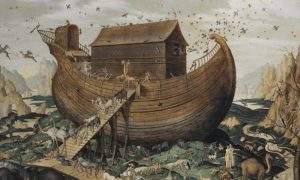
Thanks to the Historic Site Act of 1935, the United States could begin safeguarding buildings and other culturally significant sites and open them to the American public to help preserve physical pieces of the nation’s history and educate its citizens on their heritage. Since then, 2,600 National Historic Landmarks have been established all over the 50 states as well as commonwealths and territories. Ranging from the humble home where a famous writer was born to awe-inspiring overlooks traversed by Lewis and Clark on their legendary exhibition, it may seem like the only thing these landmarks has in common is the unmistakable bronze plaque that marks their designation and historical significance. How varied can they be? There’s tugs, schooners, victory ships—and those are just the boats (yes, there are boats). Due to the diversity of these sites, there is variety in the histories they are designated by the Department of the Interior to preserve. It’s a big part of what makes National Historic Landmarks so interesting. You never quite know what a landmark has in store for you until you read the plaque—and even then there’s often more to the story. One that can only be told by an expert guide or in the following gallery.

Alcatraz Island — San Francisco, California
Perhaps most famous for the maximum-security prison it housed from 1934-1963, Alcatraz Island also boasts the West Coast’s first lighthouse, built in 1854 to help ships navigate the notoriously foggy San Francisco Bay. The bay, of course, helped make Alcatraz impossible to break free from. Despite what you might think from the movies, there were no confirmed prisoner escapes from the island, which became a National Historic Landmark in 1986.

Ernest Hemingway House — Key West, Florida
Built in 1851, this Spanish Colonial was a residence of Pulitzer Prize-winning author Ernest Hemingway from 1931 until his death in 1961. While the house, which was added to the registry in 1968, has many of the writer’s many hunting trophies on display, it is also home to a number of living creatures as well. Said to be descendants of a six-toed cat that belonged to Hemingway, a crew of 50-60 cats with an extra digit roam the property. The cats are given names by the museum staff and cared for by a veterinarian.

Tremont Street Subway — Boston, Massachusetts
Tremont Street Subway was designated a National Historic Landmark in 1964 for its place in transportation history as the oldest subway in North America. Opened in 1897, over 100,000 Bostonians traveled in the underground trains on their first day in action, which was more than 1/5th of its population.

Hotel Del Coronado — San Diego, California
Designated a National Historic Landmark in 1977, this beachfront hotel opened in 1888 and remains a popular destination for visitors looking to soak up the Southern California sun. The hotel has many ties to Hollywood, it was and still is a favorite retreat for the stars, but what many might not know is that Hotel Del Coronado lit up the silver screen itself. Though the setting was said to be Florida, this hotel is where the legendary film Some Like It Hot (1958) took place.

Green-wood Cemetery — Brooklyn, New York
Green-wood Cemetery opened in 1838, well before the buildings that make up the Manhattan skyline you can see from its Brooklyn hills, and became a National Historic Landmark in 2006, but its much more than a resting place for New Yorkers—including Boss Hogg and Jean-Michel Basquiat—it’s the location of the Revolutionary War’s Battle of Long Island. Fought in late August of 1976, this was the first major battle between the British and Americans since the colonies declared its independence and it did not go well for the new nation as over 300 of its soldiers died (650 were wounded and 1,100 captured).

Beale Street Historic District — Memphis, Tennessee
Designated a National Historic Landmark in 1966, Memphis, Tennessee’s Beale Street is famous all over the world for the blues music artists like W.C. Handy created there. No one would dare deny that it’s “Home of the Blues,” but if they did, they would have to take it up with the United States Congress, which officially bestowed that moniker upon the Beale in 1977.

The Alamo — San Antonio, Texas
This tiny limestone church was built as part of a Franciscan mission established in 1718, but most know The Alamo as the site of the eponymous 1836 battle and as a symbol of Texas independence. 190 men died during The Battle of the Alamo, one of whom being Davy Crockett, a frontiersman and representative of Tennessee. In 1954, Walt Disney created a television series that portrayed a fictionalized version of Crockett the frontier adventurer. The show was a smash-hit and led to thousands of American children donning the coonskin caps their hero wore in “Davy Crockett.”

Monticello — Albermarle County, Virginia
Thomas Jefferson began building Monticello in 1770, three decades before he would become the third President of the United States, and it would serve as his home until his death in 1826. Though he was not the first to bring the dish to the United States, Jefferson is believed to have helped popularize macaroni and cheese in America by serving it to his many houseguests. The Founding Father even wrote out his own recipe.

Eastern State Penitentiary — Philadelphia, Pennsylvania
Designated a National Historic Landmark in 1965, Philadelphia’s Eastern State is thought to be the world’s first penitentiary. Unlike other prisons at the time, there was a real focus on getting the prisoners to feel penitence or remorse for their actions as part of their rehabilitation. Eastern State was founded 1829 and remained in use until 1971, which means many were imprisoned inside its intimidating walls. Most notably, Al Capone. The prominent crime boss spent 1929-1930 there after being arrested for carrying a concealed, deadly weapon. Though it was only his first prison sentence, his cell was outfitted with luxurious rugs, furniture, and even a radio. Needless to say, this does not reflect the state of the other cells.

Wrigley Field — Chicago, Illinois
Known as the “Friendly Confines” of the Chicago Cubs baseball team, Wrigley Field has served the North Side of Chicago its summer sports needs since 1914—though the Cubbies didn’t move in for two years after that (it was called Weeghman Park then and was built for a now-defunct baseball team called the Chicago Whales). Wrigley, which the Secretary of the Interior determined to be eligible for designation as a National Historic Landmark in 1987, is famous for the century (and then some) of baseball played inside its ivy-covered outfield walls, but the Chicago Bears football team also called Wrigley Field home from 1921-1970.









































